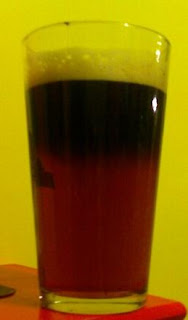I recently got a new smart phone (Droid Epic nee Galaxy S) and as one is apt to do, I've been exploring the various and plentiful applications available. One nifty free app I found is the MyFitnessPal Calorie Counter. Its a daily food diary that tracks calories consumed, calories burned via exercise. When I first launched it I entered in my age, weight, height and weight goal (for me, weight loss) and how much exercise I was willing to commit to a week. It takes that information and calculated how much I should be eating for my goals and how long it will take. Each day I enter in my foods consumed and exercise done and it tracks my daily progress.
Its got a vast food data bank accessible by typing in a foods name or description, or you can scan its bar code and it will auto-fill the info. Foods and personal recipes not in its bank can be added manually.
It reminds me of the Weight Watchers tracking system, except this based on calories instead of points and of course, this was free which is a huge plus. Plus its in my phone which means no having to carry around a little pad and pen. Also I like that it calculates the nutrition facts of my recipes and my daily food intake - I don't have to think about or remember any points. And it lets me know how I'm doing towards my goal - one day when I consumed a rather low number of calories it excitedly proclaimed "if everyday were like today you'd weigh [12 pounds less] by June 5!"
I tend to use programs like this like a personal video game - the goal is to get through the day under the allotted calorie intake number. Doing things like exercise that burn calories are like finding a hidden bonus within the game. Weight loss is like advancing to the next level, and as calorie intake levels get lower as I progress its like advanced levels getting more challenging.
Because its tracking my calories, I'm more inspired to add the low calorie bulk of fruits and vegetables to meals. The other night I made stuffing from a mix and to stretch the recipe and lower calories I added 3/4 of an apple, 1/4 of a red onion and 4 mushrooms all finely chopped. This upped the fiber and lowered the fat per serving.
Last night for dinner as I kept adding foods to my recipe I watched the calories go up. This prompted me to double the pasta, and just go ahead and deem the recipe two servings. It worked out perfectly, and my meal was satisfying and filling and I have a second meal waiting in my fridge.
I used Piazza Italia pre-seasoned sliced artichoke hearts I got in the frozen section of my local grocery store on a whim, but a can or jar I'm sure would work fine as well. I'm only mentioning the brand because I'm including the nutrition facts as determined by my smart phone app, and those were based on the specific ingredients I used.
Brussels Sprout & Artichoke Pasta, serves 2
6 fresh Brussels sprouts
1/4 red onion, diced
1 package Piazza Italia pre-seasoned sliced artichoke hearts
2 tbsp olive oil
1 tbsp butter
salt, pepper, assorted seasoning
2 servings Barilla Plus penne
Rinse the Brussels sprouts and chop in half. Arrange in a roasting pan along with the onion and drizzle with 1 tbsp of the olive oil and season generously. Toss for even coating and bake for 25 minutes at 350.
Heat 1 tbsp of olive oil in a small pot or pan and add the artichoke hearts. Heat thoroughly, stirring occasionally, about 5-8 minutes. Add to the Brussels sprouts, mix everything together and leave in the oven (turned off, but still plenty hot).
Boil water and cook your pasta. Drain. Remove the veggies from the oven, add 1 tbsp butter and the pasta and mix well until the butter is melted. Season a bit more if necessary.
Enjoy.
Calories 420
Total fat 21.8 g
Cholesterol 15 mg
Sodium 1232.2 mg
Potassium 0.1 mg
Total carbs 48 g
Dietary fiber 10.5 g
Sugars 4 g
Protein 14 g
Vitamin A 8.5%
Vitamin C 60.5%
Calcium 4.0%
Iron 18.7%














